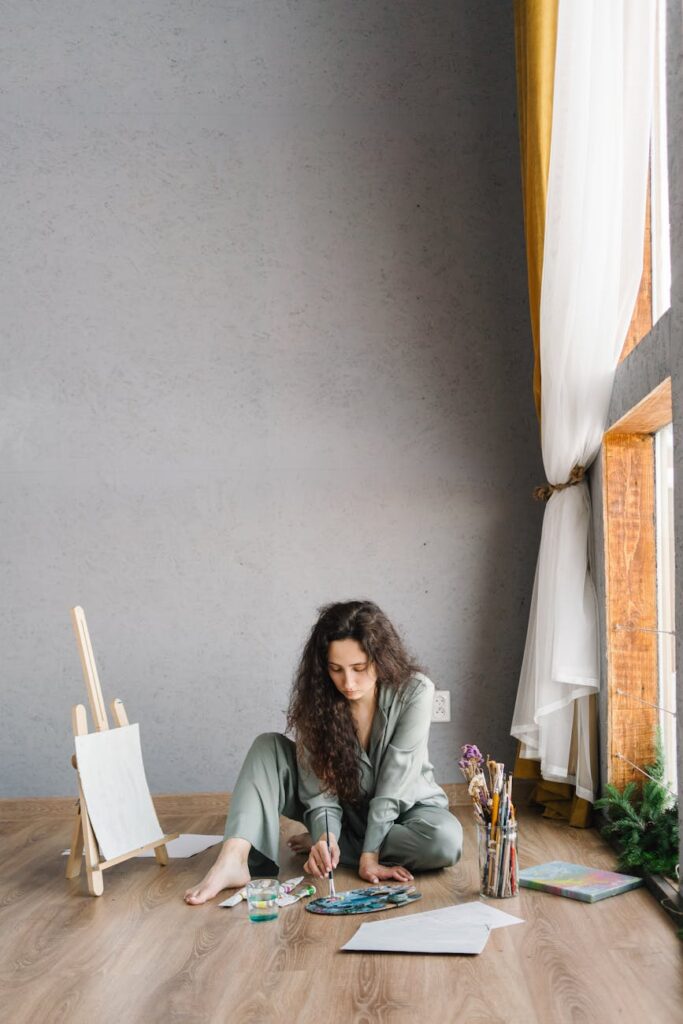What is therapeutic art practices?

What is therapeutic art practices?
Therapeutic art practices are emerging as a vital tool in personal development and mental well-being, offering an avenue for self-expression and healing. These practices are not just about creating art; they’re about transforming feelings, thoughts, and experiences into tangible expressions. As we navigate life, the power of art can play a crucial role in maintaining our mental health, allowing for emotional exploration and personal growth.
Understanding Therapeutic Art Practices
At its core, therapeutic art practices involve various creative activities aimed at facilitating emotional expression and healing. Whether through painting, drawing, or music, the objective is to communicate feelings that might be difficult to articulate with words. These practices create a safe space where individuals can explore their inner thoughts and emotions, contributing to their overall mental wellness.
Art acts as a bridge to emotional understanding. For people struggling with anxiety, depression, or trauma, engaging in art can provide relief and alter how they perceive their challenges. It’s not about artistic skill; rather, it’s about the process of creation and the healing it offers.
History and Evolution of Therapeutic Art Practices
The roots of therapeutic art practices can be traced back to ancient cultures, where art was used for spiritual and healing purposes. Over the centuries, these practices have evolved into the modern methodologies we see today. In the early 20th century, art therapy began to emerge as a recognized field, thanks in part to the works of pioneers like Margaret Naumburg and Edith Kramer. They highlighted how artistic expression could aid in the treatment of mental health issues.
Today, therapeutic art practices encompass a wide variety of approaches, including but not limited to traditional art therapy, music therapy, and expressive writing. These methodologies have been refined through research and practice, establishing themselves as effective tools for healing and personal development.
Types of Therapeutic Art Practices
Therapeutic art practices come in many forms, each with its unique benefits. Here are a few prominent types:
-
Art Therapy: This involves working with a trained art therapist to explore emotions through creating artwork. It’s often used to address mental health issues like anxiety and depression. For more on art therapy techniques, check out this guide.
-
Music Therapy: Utilizing music as a therapeutic tool, this practice can include listening, songwriting, or playing instruments. It’s a powerful way to evoke emotions and foster connection.
-
Expressive Writing: Writing about thoughts and feelings can significantly impact mental health. This practice encourages self-reflection, helping individuals process their experiences.
By engaging in these various forms of therapeutic art practices, individuals can find unique pathways to healing and self-discovery.
Benefits of Therapeutic Art Practices
Engaging in therapeutic art practices provides numerous mental, emotional, and physical benefits. The act of creating art can be cathartic, allowing individuals to express emotions that might otherwise remain bottled up.
Enhancing Emotional Well-being
Therapeutic art practices can significantly contribute to emotional regulation. Engaging in creative activities helps reduce stress and anxiety, providing an outlet for feelings that may feel overwhelming. When emotions are expressed through art, individuals often experience a sense of relief and clarity.
Studies show that art therapy can foster emotional resilience. By exploring emotions in a non-threatening way, individuals learn to manage their feelings more effectively. For instance, research has demonstrated that art therapy helps improve interpersonal relationships and emotional health, making it a valuable tool for many.
Improving Cognitive Functions
Beyond emotional benefits, therapeutic art practices can also enhance cognitive skills. Engaging in creative activities stimulates the brain, improving focus, creativity, and problem-solving abilities. The process of creating art encourages individuals to think outside the box and approach challenges from new perspectives.
Moreover, art therapy can help sharpen memory and concentration. As individuals immerse themselves in the creative process, they often find themselves more focused and engaged. This cognitive engagement can be particularly beneficial for those experiencing cognitive decline or attention issues.
Incorporating Therapeutic Art Practices into Daily Life
Integrating therapeutic art practices into your daily routine can offer a wealth of benefits. Here are some practical tips to help you get started.
Creating a Personal Art Space
Designate a space in your home where you can engage in creative activities. This could be a corner in your living room, a spare room, or even a cozy nook in your bedroom. Surround yourself with art supplies, such as paints, brushes, colored pencils, and paper. Having a dedicated space encourages regular engagement in therapeutic practices.
Examples of Daily Art Practices
Even if you’re not an artist, there are simple exercises you can incorporate into your daily life. Here are a few suggestions:
-
Doodle Journaling: Spend a few minutes each day drawing or doodling. Don’t strive for perfection; let your hand move freely to express thoughts and feelings.
-
Coloring: Adult coloring books have surged in popularity for a reason. The act of coloring can be meditative and relaxing.
-
Collage Making: Gather images from magazines and create a vision board that reflects your goals, feelings, or experiences.
-
Mindful Art: Focus on the process rather than the outcome. As you create, pay attention to the colors, textures, and emotions that arise.
These practices can easily fit into a busy schedule, offering moments of calm and creativity amidst daily life.
Conclusion
Therapeutic art practices provide a powerful means of self-care and personal growth. By embracing creativity, you open up pathways for emotional expression and cognitive enhancement. Whether through art therapy, music therapy, or expressive writing, these practices can transform how you approach your mental well-being. So why wait? Start exploring therapeutic art practices today and discover the profound impact they can have on your life. The canvas of your emotions awaits your brush.

Photo by Mikhail Nilov